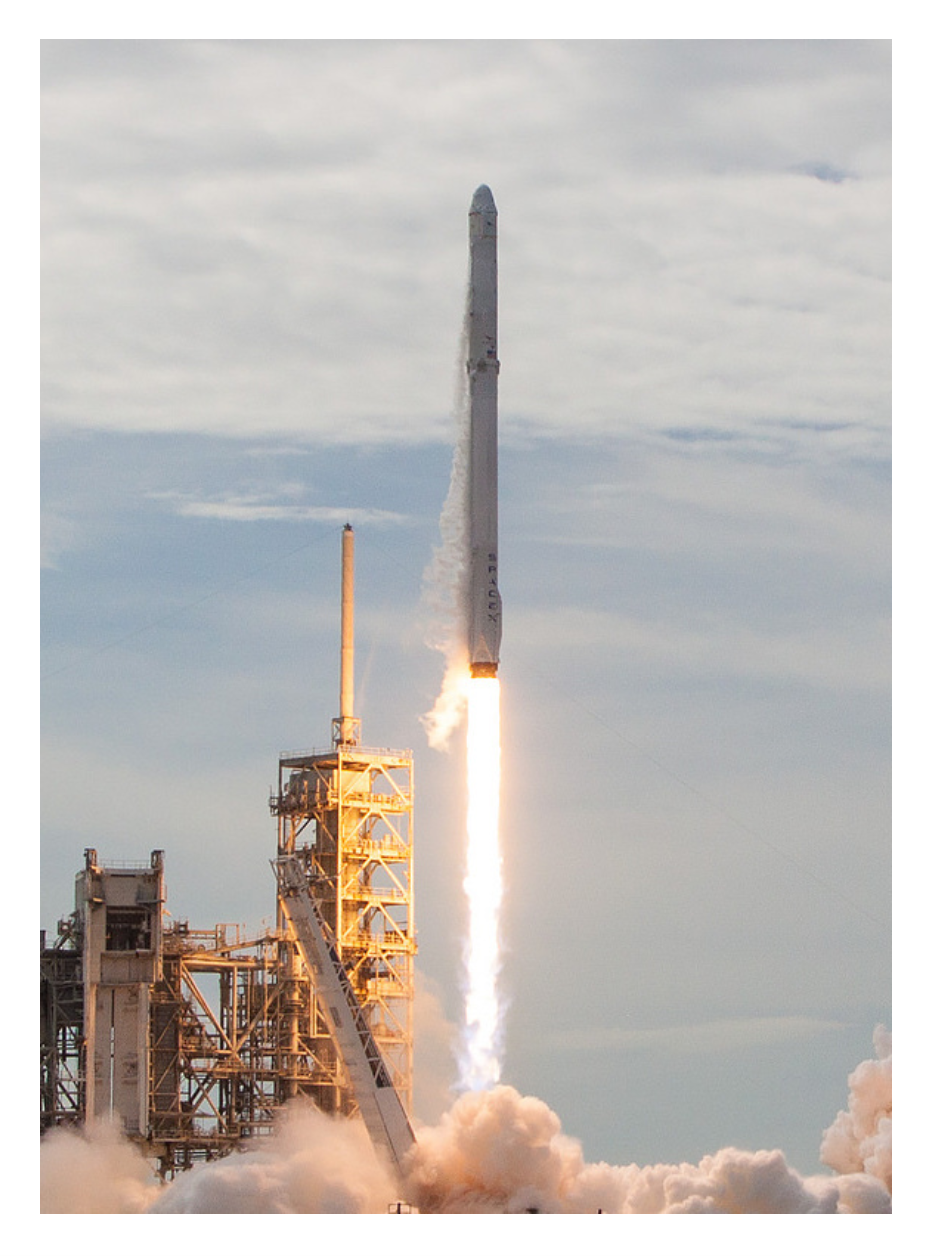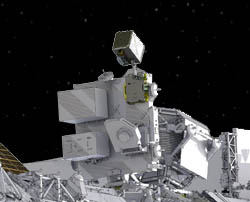The Neutron Star Interior Composition Explorer MissionImportant Notice Regarding An Increase in Day-time Light Loading
On May 22, 2023, between 13:00 and 14:00 UTC, NICER's X-ray Timing Instrument (XTI) developed a visible-light "leak," resulting in a high rate of "undershoot" detector resets and increased low-energy (E<0.8 keV) noise when the ISS is on the day side of its orbit. Orbit-night observations are unaffected, with X-ray spectra from targets acquired in dark conditions consistent with those obtained before May 22.
The NICER team is working on mitigation strategies.
|
| Requesting Targets of Opportunity (ToOs) with NICER |
|---|
|
NICER is capable of following up on Targets of Opportunity (ToO) within 4 hours (depending on source visibility). TOO requests should be submitted via the ARK/RPS NICER Target of Opportunity/Director's Discretionary Time Request form. The NICER team recommends that PIs use the NICER Enhanced Visibility Calculator to check the near term (~2 weeks) visbility for their source. This tool is especially useful for planningcoordinated observations. The NICER team monitors the Gamma-ray Coordination Network (GCN)/Transient Astronomy Network (TAN). Details of previously submitted TOO/DDT requests are available at the TOO Summary page. Please review the NICER ToO Policy. Any questions regarding how to make TOO requests should be sent to the NICER Helpdesk via the HEASARC's Feedback Form. Summary of OHMAN Targets observed by NICER: OHMAN (Orbiting High-energy Monitor Alert Network) X-ray follow-up observation program uses JAXA's MAXI all-sky monitor to detect sudden X-ray bursts and to automatically notify NICER for immediate followup. See the OHMAN Summary page for a list of OHMAN triggers. |
NICER was launched aboard a SpaceX
Falcon 9 rocket on June 3, 2017 at 17:07 EDT (21:07 UTC)

The Neutron star Interior Composition Explorer (NICER) is an International Space Station (ISS) payload devoted to the study of neutron stars through soft X-ray timing. Neutron stars are unique environments in which all four fundamental forces of nature are simultaneously important. They squeeze more than 1.4 solar masses into a city-size volume, giving rise to the highest stable densities known anywhere. The nature of matter under these conditions is a decades-old unsolved problem, one most directly addressed with measurements of the masses and, especially, radii of neutron stars to high precision (i.e., better than 10 percent uncertainty). With few such constraints forthcoming from observations, theory has advanced a host of models to describe the physics governing neutron star interiors; these models can be tested with astrophysical observations.
NICER will enable rotation-resolved spectroscopy of the thermal and non-thermal emissions of neutron stars in the soft (0.2-12 keV) X-ray band with unprecedented sensitivity, probing interior structure, the origins of dynamic phenomena, and the mechanisms that underlie the most powerful cosmic particle accelerators known. The NICER mission achieves these goals by deploying an X-ray timing and spectroscopy instrument on the International Space Station (ISS).
By answering a long-standing astrophysics question - How big is a neutron star? - NICER will confront nuclear physics theory with unique measurements, exploring the exotic states of matter within neutron stars through rotation-resolved X-ray spectroscopy. The capabilities that NICER brings to this investigation are unique: simultaneous fast timing and spectroscopy, with low background and high throughput. NICER will also provide continuity in X-ray-timing astrophysics more broadly, post-Rossi X-ray Timing Explorer, through a Guest Observer program. Finally, in addition to its science goals, NICER will enable the first space demonstration of pulsar-based navigation of spacecraft, through the Station Explorer for X-ray Timing and Navigation Technology (SEXTANT) enhancement to the mission, funded by the NASA Space Technology Mission Directorate's Game-Changing Development program.
NICER's X-ray Timing Instrument (XTI) represents an innovative configuration of high-heritage components. The heart of the instrument is an aligned collection of 56 X-ray "concentrator" optics (XRC) and silicon drift detector (SDD) pairs. Each XRC collects X-rays over a large geometric area from a roughly 30 arcmin2 region of the sky and focuses them onto a small SDD. The SDD detects individual photons, recording their energies with good (few percent) spectral resolution and their detection times to an unprecedented 100 nanoseconds RMS relative to Universal Time. Together, this assemblage provides a high signal-to-noise-ratio photon-counting capability within the 0.2-12 keV X-ray band, perfectly matched to the typical spectra of neutron stars as well as a broad collection of other astrophysical sources.
From NICER's ISS platform, a star-tracker-based pointing system allows the XTI to point to and track celestial targets over nearly a full hemisphere. The pointing system design accommodates the ISS vibration and contamination environments, and enables (together with NICER's GPS-based absolute timing) high-precision pulsar light-curve measurements through ultra-deep exposures spanning the 18-month mission lifetime.
Simulated NICER count rates and spectra can be derived using the WebPIMMS and WebSPEC tools. The Viewing tool can be used to determine the times when a specific sky position is potentially visible to NICER.
More details are available in NICER's Mission Guide. An overview of NICER science is available here.
More NICER documentation and publications.
If you would like to receive email about NICER developments, please send an e-mail to nicer-announce-owner@lists.nasa.gov to subscribe to the NICER email announcements list.
If you have scientist-related questions concerning NICER, such as calibration, analysis, proposing, ToOs, or coordination please
use HEASARC's Feedback form
, or click
the "HELP" icon to the left.
For those interested in general astronomy/astrophysics information please go onward to the Education and Public Outreach site.

Latest News
- Update to Enhanced Visibility Calculator (09 Feb 2024)
The NICER enhanced visibility calculator, which provides detailed target visibility information taking into account blockages by ISS structures and other constraints, has been updated. This update allows calculation of target visibilities using orbit day target/sun angles greater than 90 degrees, appropriate for targets observed during ISS orbit day in the presence of the XTI light leak. The update also allows the user to calculate visibilities for observations restricted to orbit night or orbit day. - Update on Patching the NICER Light Leak (25 Jan 2024)
On January 9, 2024, the NICER team received approval from the ISS program to proceed with a light-leak repair effort via either the ISS robotic system (EVR) or ISS astronauts during a spacewalk (EVA). The choice of EVR vs. EVA is expected to be made by the end of February. See the NICER Light-leak Update for more information. - NICER Cycle 6 Proposal Results Available (29 Nov 2023)
The result of the recent NICER Cycle 6 review is now available for accepted proposals and approved targets. Cycle 6 begins March 1, 2024. The deadline for Cycle 6 Phase 2 proposals for accepted programs is January 24, 2024. - Important Bug Fix to NICERDAS 11 (24 Aug 2023)
There's a significant bug in the version of nifpmsel released in HEASoft 6.32/NICERDAS 11, which can cause an incorrect normalization of lightcurves and spectra in some cases. NICERDAS users should update to HEASoft 6.32.1 and afterwards use nicerl2 to reprocess any NICER data processed with HEASoft 6.32/NICERDAS 11. A patch installer script is available to update existing HEASoft 6.32 installations to HEASoft 6.32.1. - HEASoft 6.32/NICERDAS 11 released (20 Jul 2023)
HEASoft 6.32 was released on July 20, 2023. This release includes NICERDAS 11, a moderately significant feature release for NICER which contains a number of improvements, especially to deal with the optical light leak which developed on May 22, 2023. Please see the HEASoft 6.32 release notes for details.



